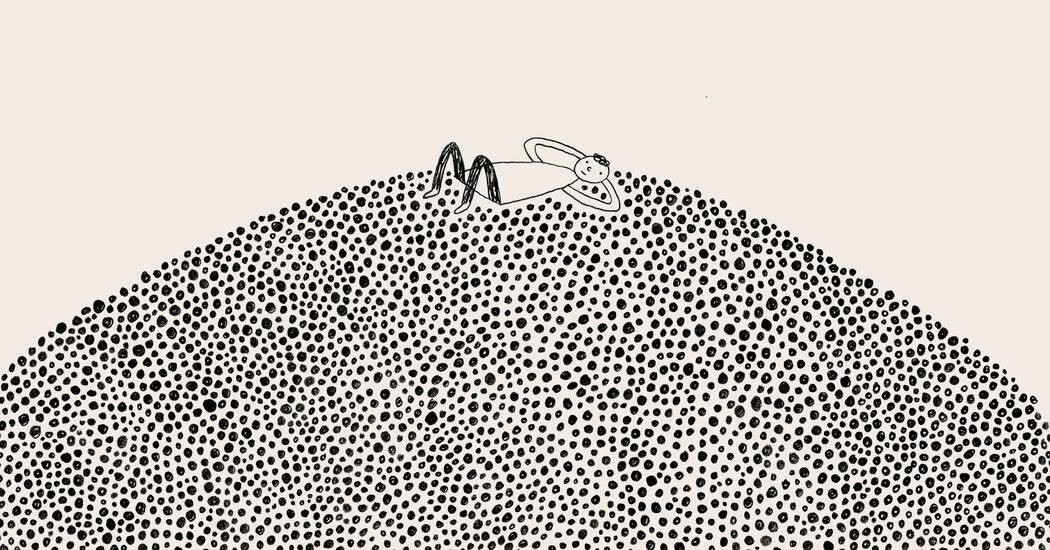Eventually, through many years of research, Boston and other scientists revealed that the microbes in Lechuguilla do much more than spit out a little dirt. Lechuguilla is ensconced in thick layers of limestone, the petrified remains of a 250-million-year-old reef. The manifold chambers in such caves are usually formed by rainwater that seeps into the ground and gradually dissolves the limestone. In Lechuguilla, however, microbes are also the sculptors: Bacteria eating buried reserves of oil release hydrogen-sulfide gas, which reacts with oxygen in groundwater, producing sulfuric acid that carves away limestone. In parallel, different microbes consume hydrogen sulfide and generate sulfuric acid as a byproduct. Similar processes happen in 5 to 10 percent of limestone caverns globally.
Since Boston’s initial descent into Lechuguilla, scientists around the world have discovered that micro-organisms transform the planet’s crust wherever they inhabit it. Alexis Templeton, a geomicrobiologist at the University of Colorado, Boulder, regularly visits a barren mountain valley in Oman where tectonic activity has pushed sections of the earth’s mantle — the layer that sits below the crust — much closer to the surface. She and her colleagues drill boreholes up to a quarter of a mile into the uplifted mantle and extract long cylinders of 80-million-year-old rock, some of which are beautifully marbled in striking shades of maroon and green. In laboratory studies, Templeton has demonstrated that these samples are full of bacteria, some of which change the composition of Earth’s crust: They eat hydrogen and breathe sulfates in the rock, exhale hydrogen sulfide and create new deposits of sulfide minerals similar to pyrite, also known as fool’s gold.
Through related processes, microbes have helped form some of Earth’s stores of gold, silver, iron, copper, lead and zinc, among other metals. As subsurface microbes break down rock, they often free the metals stuck within it. Some of the chemicals microbes release, such as hydrogen sulfide, combine with free-floating metals, forming new solid compounds. Other molecules produced by microbes grab soluble metals and bind them together. Some microbes stockpile metal inside their cells or grow a crust of microscopic metal flakes that continuously attract even more metal, potentially forming a substantial deposit over long periods of time.
Life, in particular microbial life, has forged a large quantity of Earth’s minerals, which are naturally occurring inorganic solid compounds with highly organized atomic structures, or, to put it more plainly, very elegant rocks. Today Earth has more than 6,000 distinct mineral species, most of which are crystals such as diamond, quartz and graphite. In its infancy, however, Earth did not have much mineral diversity. Over time, the continuous crumbling, melting and resolidifying of the planet’s early crust shifted and concentrated uncommon elements. Life began to break apart rock and recycle elements, generating entirely new chemical processes of mineralization. More than half of all minerals on the planet can occur only in a high-oxygen environment, which did not exist before microbes, algae and plants oxygenated the ocean and atmosphere.
Through the combination of tectonic activity and the ceaseless bustle of life, Earth developed a mineral repertoire unmatched by any other known planetary body. Comparatively, the moon, Mercury and Mars are minerally impoverished, with perhaps a few hundred mineral species among them at most. The variety of minerals on Earth depends not merely on the existence of life but also on its idiosyncrasies. Robert Hazen, a mineralogist and astrobiologist at Carnegie Science, and the statistician Grethe Hystad have calculated that the chance of two planets having an identical set of mineral species is one in 10³²². Given that there are only an estimated 10²⁵ Earthlike planets in the cosmos, there is almost certainly no other planet with Earth’s exact complement of minerals. “The realization that Earth’s mineral evolution depends so directly on biological evolution is somewhat shocking,” Hazen writes in his book “Symphony in C.” “It represents a fundamental shift from the viewpoint of a few decades ago, when my mineralogy Ph.D. adviser told me: ‘Don’t take a biology course. You’ll never use it!’ ”
